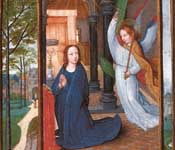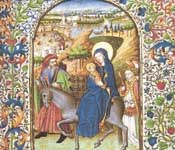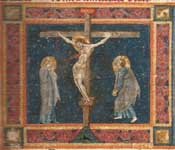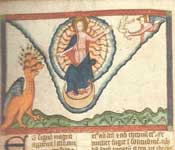Loose Leaves
 Loose Leaves was written when Sophie was 16. Sophie had gone to Melbourne to receive a Young Poet of the Year Award from the Fellowship of Australian Writers. An exhibition of illuminated manuscripts, The Medieval Imagination, was being held at the State Library of Victoria. Sophie loved the exhibition. She came home and wrote all the poems in 4 days, they just burned straight on to the page.
Loose Leaves was written when Sophie was 16. Sophie had gone to Melbourne to receive a Young Poet of the Year Award from the Fellowship of Australian Writers. An exhibition of illuminated manuscripts, The Medieval Imagination, was being held at the State Library of Victoria. Sophie loved the exhibition. She came home and wrote all the poems in 4 days, they just burned straight on to the page.
As always, she wanted to translate the world of the past into our own, to create a beautiful little gem of a book, rather like those small objects of beauty, the illuminations, that so inspired her, so granting continuity to a world, all those voices, she did not want us to silence or forget.
It is called Loose Leaves because it reflects both the fact that the poems are based on individual pages from various texts, and because it represents the fragility of all things human against time. Ours is a broken world, full of broken things. Beauty is the frail, but powerful, answer we have to it.
Sophia gave a reading at the Queensland Poetry Festival in 2009.
She read poems from Loose Leaves. The following is from the script she wrote to accompany the reading.
The poems I’ll be reading today were inspired by The Medieval Imagination, an exhibition of illuminated texts at the State Library of Victoria last year (I’d like to thank the State Library, the Fitzwilliam Museum in Cambridge, and the Dunedin Public Library for the use of the images tonight). The poems are part of a collection which matches a single poem with a single manuscript leaf, in which the pages have been chosen to “tell” in pictures the story of Christ’s life. The progression is, of course, my own creation and quite artificial, but the idea of “reading” a story in pictures appealed to me, as based on Medieval precedent—innumerable predellas and fresco cycles follow the same pattern. Called Loose Leaves, the poetry collection is designed to create a whole out of fragments. Each poem is a palimpsest of the original text, and itself becomes a text—the images connecting and reflecting each other.
All of these paintings represent a symbolic language containing infinite variation, a chain of meaning connecting past to present, generation to generation. As poets and as readers we are both the users and the transmitters of this lexicon. Today we need to keep adding not subtracting meaning, remembering not forgetting, to connect ourselves to the chain that ultimately joins all cultures.
In many places in the world today, education is precious. The book is something of immense value—as it would have been to those young women who may have been taught to read through the original illuminated manuscript with which we began this reading.




